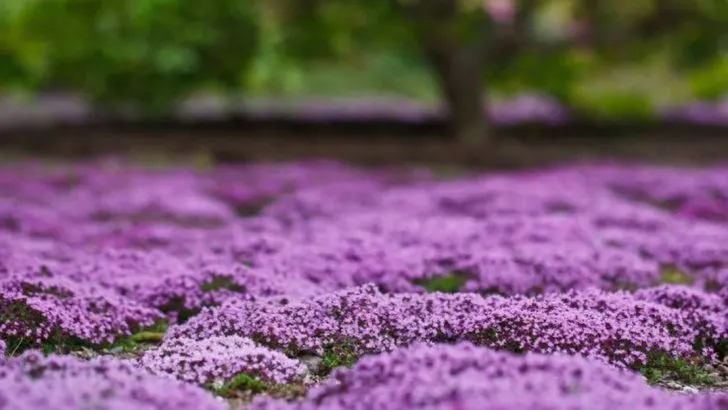Flowering ground covers are the perfect solution for adding beauty, suppressing weeds, and filling in bare spots in your garden. These low-growing plants spread quickly, creating a lush carpet of blooms that requires minimal maintenance.
Whether you need a colorful border, erosion control on a slope, or an alternative to traditional grass, the right ground cover can transform your landscape. From sun-loving varieties to shade-tolerant options, these plants offer stunning flowers while keeping your garden vibrant and full.
In this article, we explore 25 flowering ground covers that spread like crazy, helping you create a dense, thriving, and effortlessly beautiful garden.
Creeping Thyme
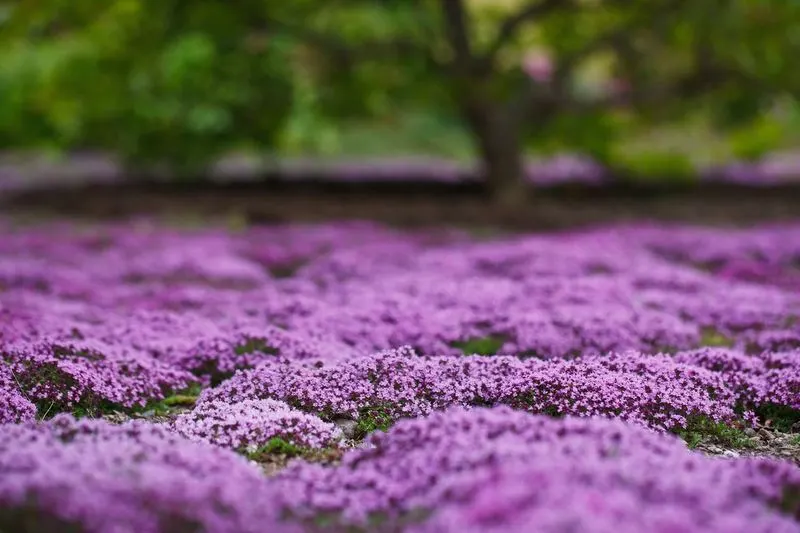
Tiny aromatic leaves adorned with purple blooms make this an attractive choice. Beyond its beauty, it can withstand foot traffic, releasing a pleasing fragrance when trod upon. Ideal for sunny spots, it creates a dense carpet, suppressing weeds effortlessly. The drought-tolerant nature of this plant adds to its appeal. In rock gardens or between stepping stones, it thrives, providing visual interest with minimal care. Gardeners often use it to edge pathways, adding a touch of charm. Its low-growing habit and resilience make it a favorite among many.
Sweet Woodruff
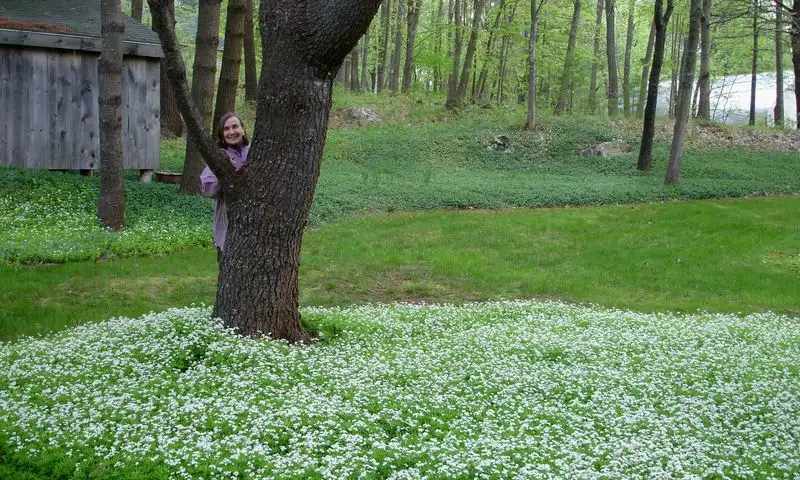
In shady corners, this plant shines with its whorled leaves and tiny white flower clusters. Sweet woodruff exudes a sweet hay-like fragrance, particularly when dried. Its rapid spread in moist, shady gardens makes it a perfect carpet. Beyond its ornamental value, it’s known for its use in herbal teas and potpourris. Often found under trees, it coexists with other shade-loving plants. While not fussy, it thrives in well-drained soil. Its ability to flourish in challenging spots adds to its garden appeal.
Lilyturf
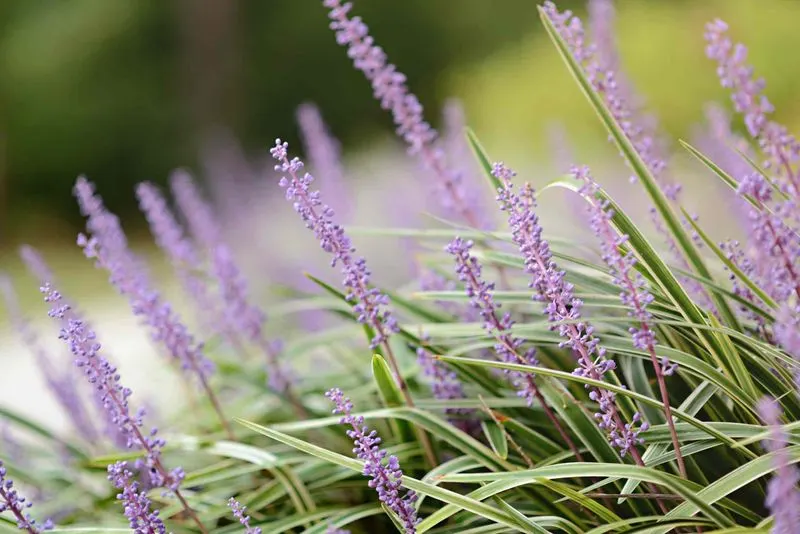
Grass-like leaves and purple flower spikes define lilyturf’s charm. It’s a versatile plant, thriving in sun or shade, making it adaptable to various garden conditions. Often used as an edging plant, it provides a neat, tidy appearance. Its ability to withstand drought and poor soil conditions further enhances its appeal. When mass planted, it forms a lush mat, providing excellent weed control. While low-maintenance, it rewards with striking foliage and flowers. This plant’s adaptability makes it a popular choice for many garden settings.
Mazus
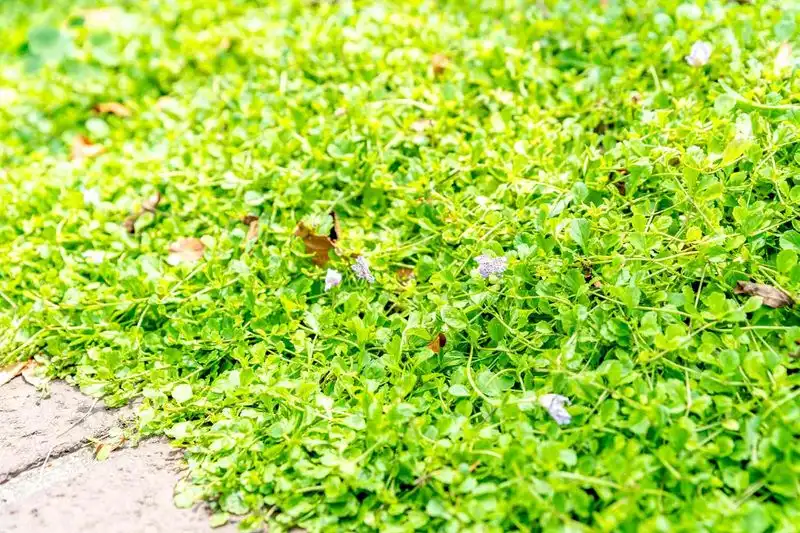
For damp areas, mazus offers vibrant ground coverage with its tiny purple flowers. It forms a dense mat, ideal for filling in gaps in rock gardens or around ponds. Its rapid growth rate ensures quick coverage, reducing maintenance. The plant’s resilience to foot traffic makes it suitable for pathways. During spring and summer, it bursts with color, attracting pollinators. Though it prefers moist conditions, it tolerates occasional drought. This adaptability makes mazus a go-to choice for problem areas.
Creeping Jenny

Golden, coin-shaped leaves make creeping jenny a standout. Its trailing habit adds interest to hanging baskets or along walls. It thrives in moist soil, making it ideal for water gardens or boggy areas. Apart from its beauty, it effectively suppresses weeds. While it prefers full sun, it tolerates shade, though growth may slow. This plant’s vibrant foliage provides year-round interest. Easy to care for, it’s often used to spill over containers, adding a dash of brightness. Its adaptability makes it a versatile garden choice.
Bugleweed
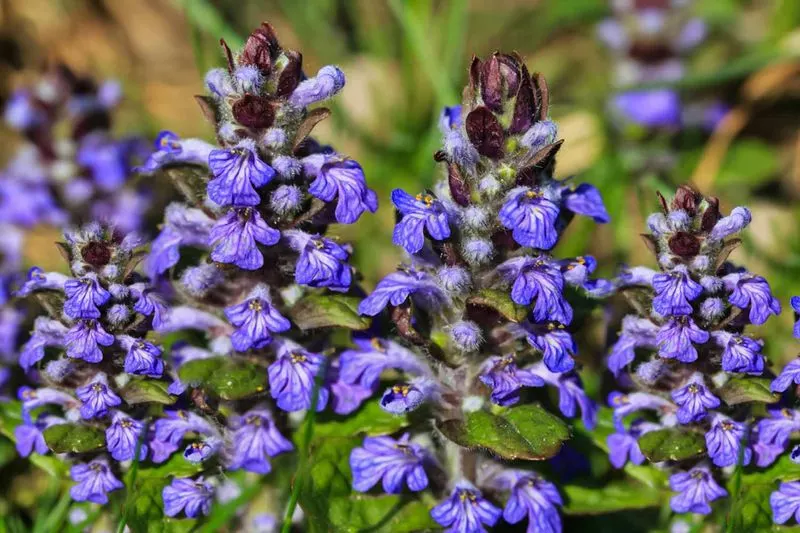
Dark green leaves and blue flower spikes characterize bugleweed. It’s an excellent choice for shady areas, forming dense mats that crowd out weeds. Its springtime bloom adds a burst of color to woodland gardens. Bugleweed’s ability to thrive in poor soil conditions makes it valuable for challenging spots. Though vigorous, it’s easy to manage with occasional trimming. This plant offers an attractive, low-maintenance solution for ground cover. Its adaptability to different environments enhances its appeal.
Deadnettle

Variegated leaves and pink flowers make deadnettle a garden favorite. Perfect for shady areas, it forms a colorful carpet under trees or in borders. Its ability to tolerate poor soil conditions adds to its versatility. Deadnettle’s rapid growth rate ensures quick coverage, reducing the need for weeding. During spring and summer, it provides a splash of color, attracting beneficial insects. Low-maintenance, it thrives with minimal care. This plant’s distinct foliage and flowers make it a standout choice for shady spots.
Ice Plant

Fleshy leaves and vibrant pink blooms define the ice plant. Ideal for sunny, dry areas, it provides a splash of color throughout summer. Its drought-tolerant nature makes it perfect for rock gardens or xeriscaping. The plant forms a dense mat, suppressing weeds while adding visual interest. Though hardy, it requires good drainage to thrive. In coastal gardens, it withstands salty conditions, adding versatility to its uses. This plant’s resilience and striking appearance make it a gardener’s favorite.
Ajuga
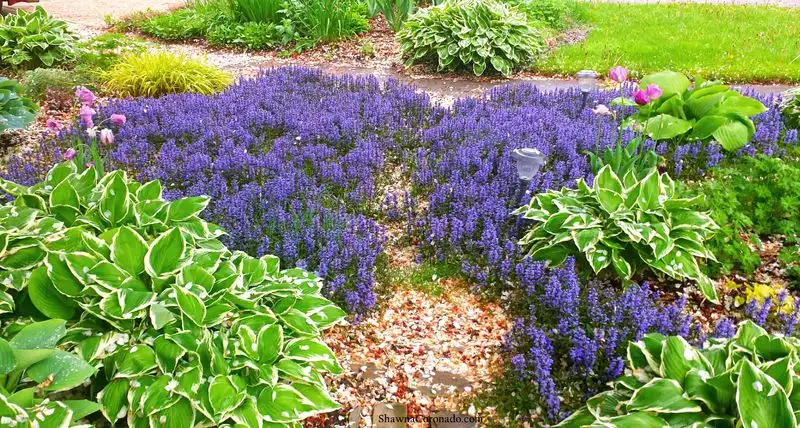
Glossy leaves and blue flower spikes characterize ajuga. Best in shaded or partially sunny areas, it quickly spreads to form a dense mat. This ground cover is perfect for suppressing weeds while adding color. Its adaptability to various soil conditions makes it versatile. Ajuga’s spring bloom creates a vibrant display, attracting pollinators. Though vigorous, it’s easy to control with simple pruning. This plant’s resilience and aesthetic appeal make it a popular choice for many garden landscapes.
Barren Strawberry
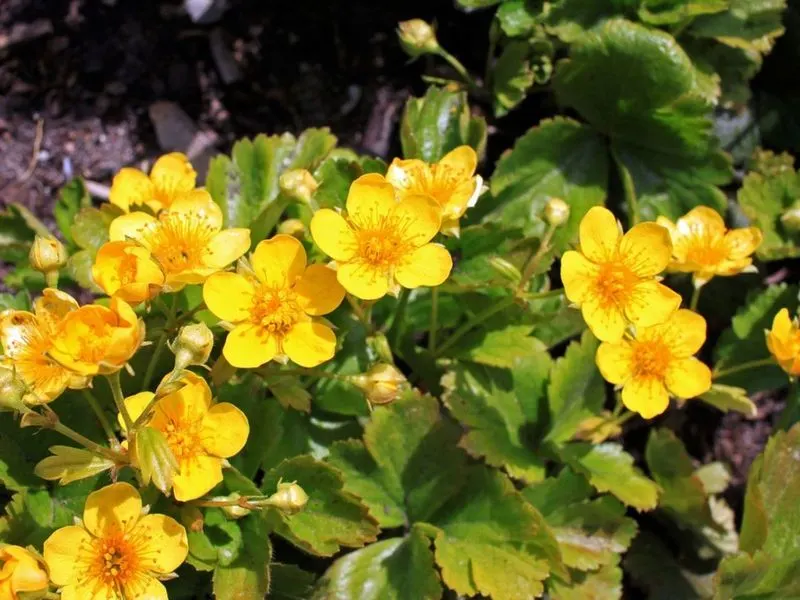
Yellow flowers and green leaves define the barren strawberry. Unlike its fruiting namesake, it offers ornamental value with minimal care. Perfect for sunny or partially shaded areas, it forms a dense mat, controlling weeds effectively. Its tolerance to drought and poor soils adds to its appeal. In spring, it bursts into bloom, providing a bright ground cover solution. This plant’s ability to withstand challenging conditions makes it a reliable choice for various garden settings.
Creeping Phlox
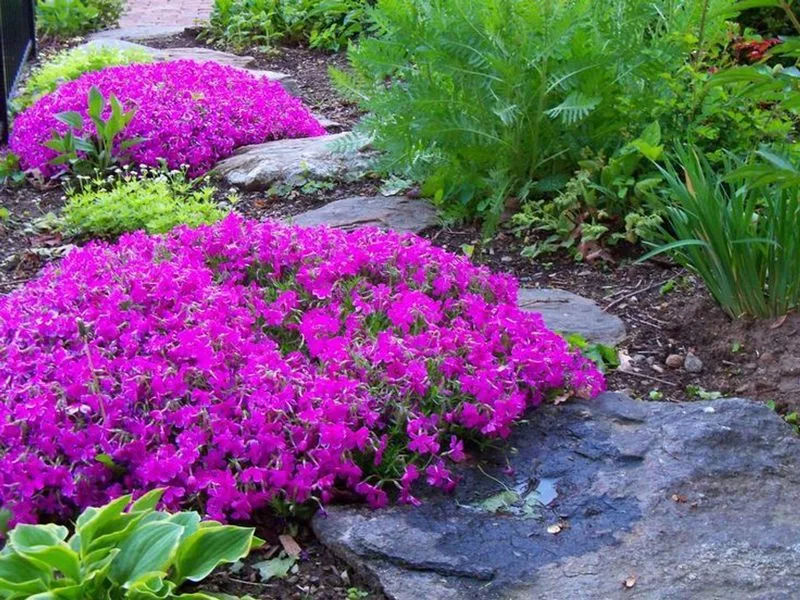
Masses of pink, purple, or white flowers define creeping phlox. It’s perfect for sunny spots, where it creates a vibrant carpet of color. Its ability to cascade over walls or rockeries adds to its visual appeal. In spring, it bursts into bloom, attracting bees and butterflies. Though it requires well-drained soil, it’s low-maintenance, asking little in return for its beauty. Gardeners often use it to edge borders, where it softens the landscape with its blooms. This plant’s charm and ease of care make it a garden favorite.
Pachysandra
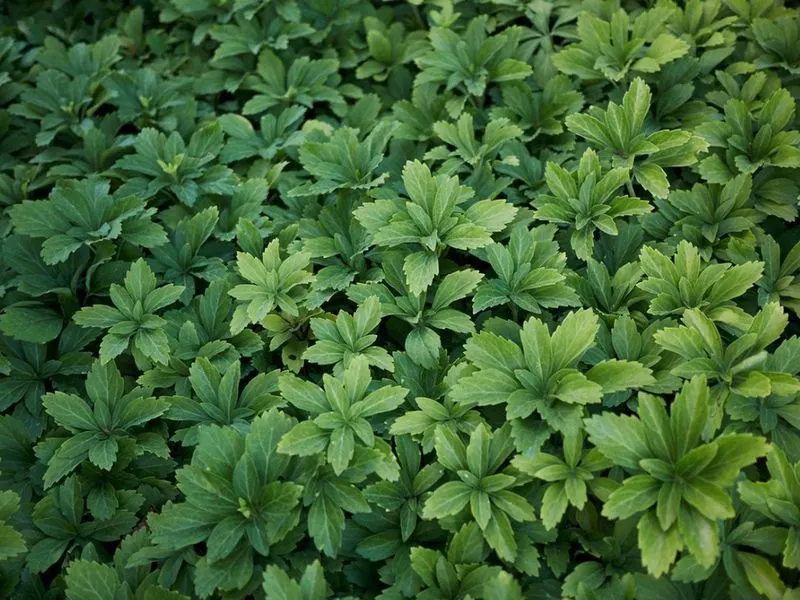
Glossy, evergreen leaves and tiny white flowers characterize pachysandra. It’s an excellent choice for shady areas, where it forms a dense, lush mat. Its ability to thrive in poor soil conditions makes it a valuable ground cover. Though it grows slowly, once established, it requires little maintenance. In spring, it provides a subtle floral display, adding to its charm. This plant’s resilience and evergreen nature make it a standout choice for year-round interest in shady spots.
Periwinkle

Glossy leaves and blue flowers define periwinkle. It thrives in shady areas, quickly forming a dense mat that suppresses weeds. Its ability to grow in poor soils enhances its versatility. During spring, it offers a splash of color with its blooms. Low-maintenance, it requires minimal care once established. This plant’s adaptability and aesthetic appeal make it a popular choice for ground cover in challenging garden spots.
Houttuynia

Variegated leaves and small white flowers define houttuynia’s distinct appearance. It’s a vigorous grower, thriving in moist, shady areas. Its ability to spread quickly makes it ideal for problem spots. While it requires management to prevent overgrowth, its striking foliage adds visual interest. This plant’s adaptability to various conditions enhances its appeal. Gardeners often use it in water gardens, where it thrives with minimal care. Its unique appearance and resilience make it a noteworthy choice.
Corsican Mint
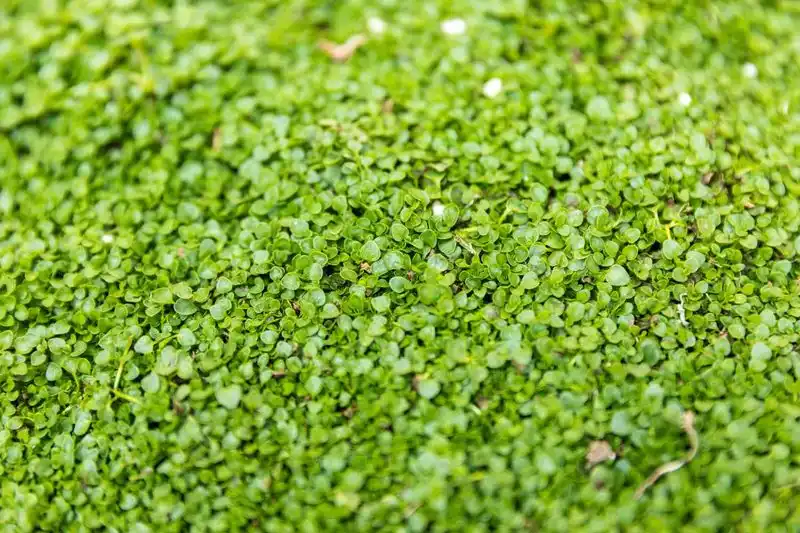
Tiny leaves and delicate blooms make corsican mint a charming ground cover. Its pleasant fragrance releases with every step, making it ideal for pathways. While it thrives in moist, shaded areas, it requires some care to prevent drying. Despite its small size, it forms a dense mat, suppressing weeds effectively. This plant’s aromatic quality and aesthetic appeal make it a gardener’s delight. Its ability to thrive in challenging spots adds to its versatility, offering both beauty and function.
Dichondra
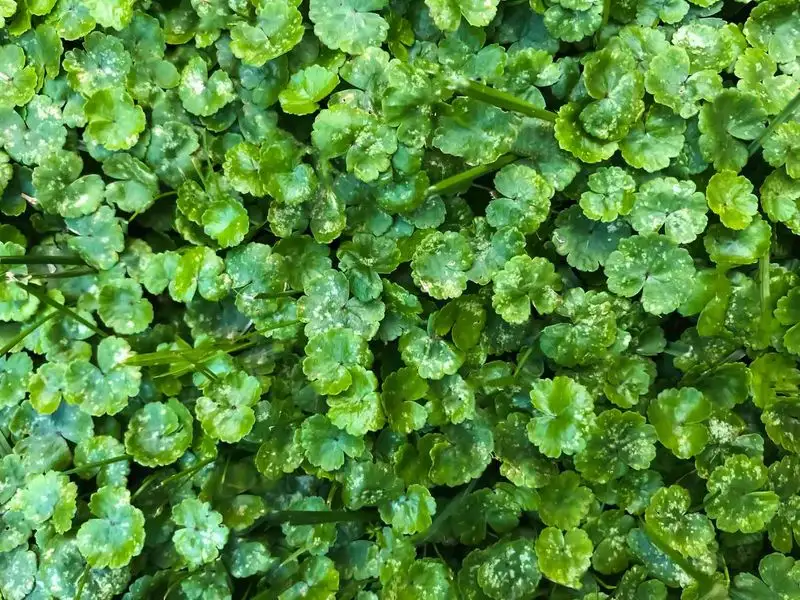
Round, silver-green leaves define dichondra’s unique appearance. It’s a low-growing plant, perfect for sunny areas where it forms a dense mat. Its drought-tolerant nature makes it suitable for xeriscaping, reducing water needs. Although it requires minimal care, it rewards with striking foliage. Often used in rock gardens or as a lawn alternative, it provides both beauty and function. This plant’s resilience and aesthetic appeal make it a popular choice for modern gardens.
Thrift

Pink pom-pom flowers and grass-like leaves characterize thrift. It’s an excellent choice for coastal gardens, thriving in sandy, well-drained soils. This hardy plant adds a splash of color throughout spring and summer. While it prefers sun, it tolerates partial shade, making it versatile. Thrift’s ability to withstand salty conditions enhances its appeal in seaside areas. This plant’s resilience and vibrant blooms make it a standout choice for challenging environments.
Rock Cress
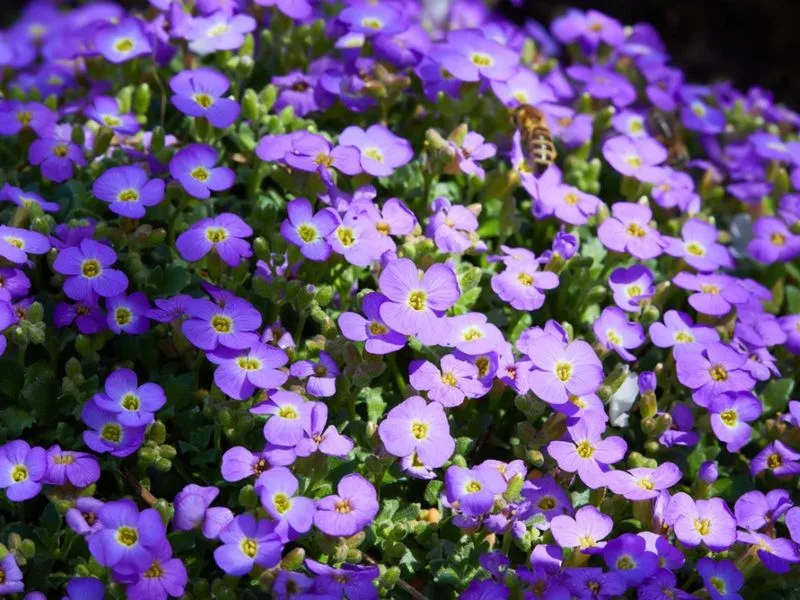
Cascading blooms define rock cress, a perfect choice for rock gardens. Its ability to spread over rocks or walls adds to its visual interest. In spring, it bursts into color, attracting bees and butterflies. Though it prefers well-drained soil, it’s low-maintenance, requiring minimal care. Gardeners often use it as a border plant for its aesthetic appeal. This plant’s charm and hardiness make it a favorite for adding seasonal color.
Creeping Raspberry
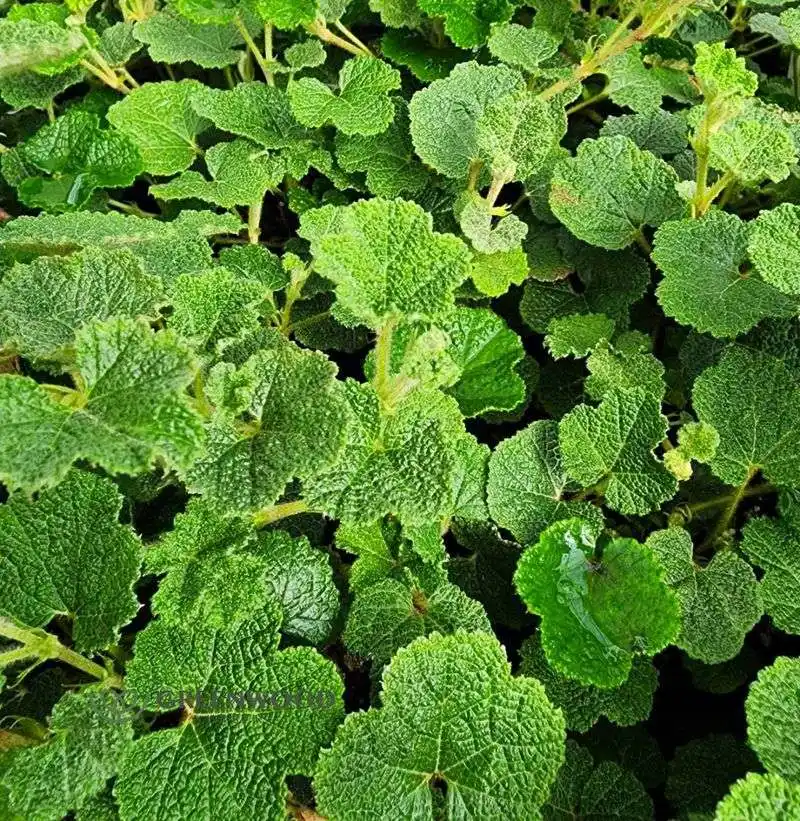
White flowers and textured leaves define creeping raspberry. It’s an excellent ground cover for slopes, where it forms a dense, weed-suppressing mat. Its ability to thrive in poor soils enhances its versatility. During spring and summer, it offers seasonal interest with its blooms. While it requires occasional trimming to maintain form, it’s low-maintenance. This plant’s resilience and unique appearance make it a valuable addition to various garden settings.
Sagina
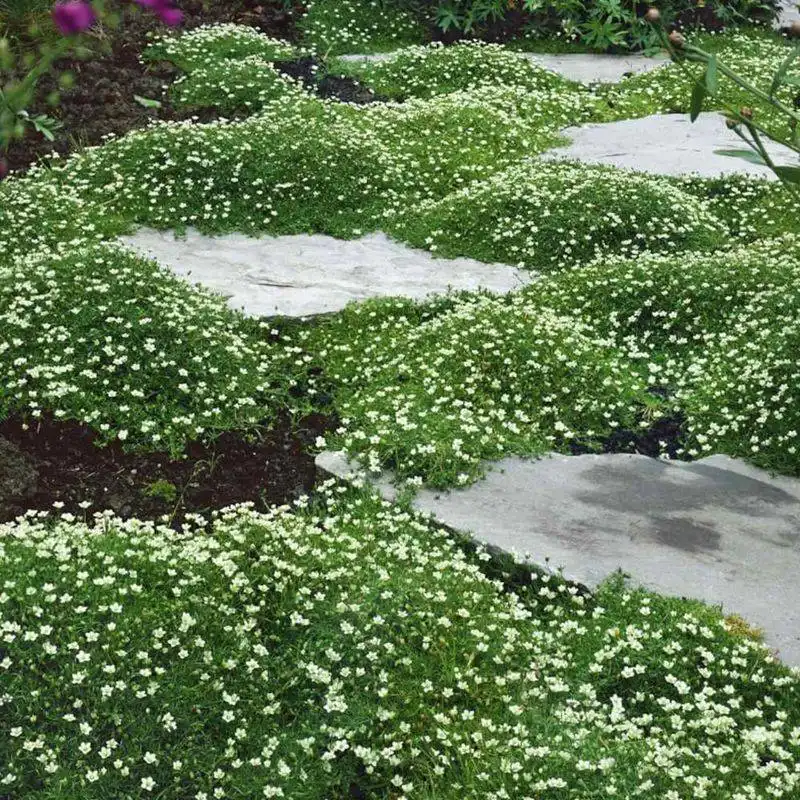
Tiny, moss-like foliage and small flowers define sagina. It’s perfect for creating a soft carpet along garden paths. This plant thrives in moist, well-drained soil, forming a dense mat. Though it requires occasional trimming, its aesthetic appeal is worth the effort. During spring, it offers a subtle floral display, adding to its charm. This plant’s adaptability and unique appearance make it a popular choice for adding texture to garden landscapes.
Snow-in-Summer
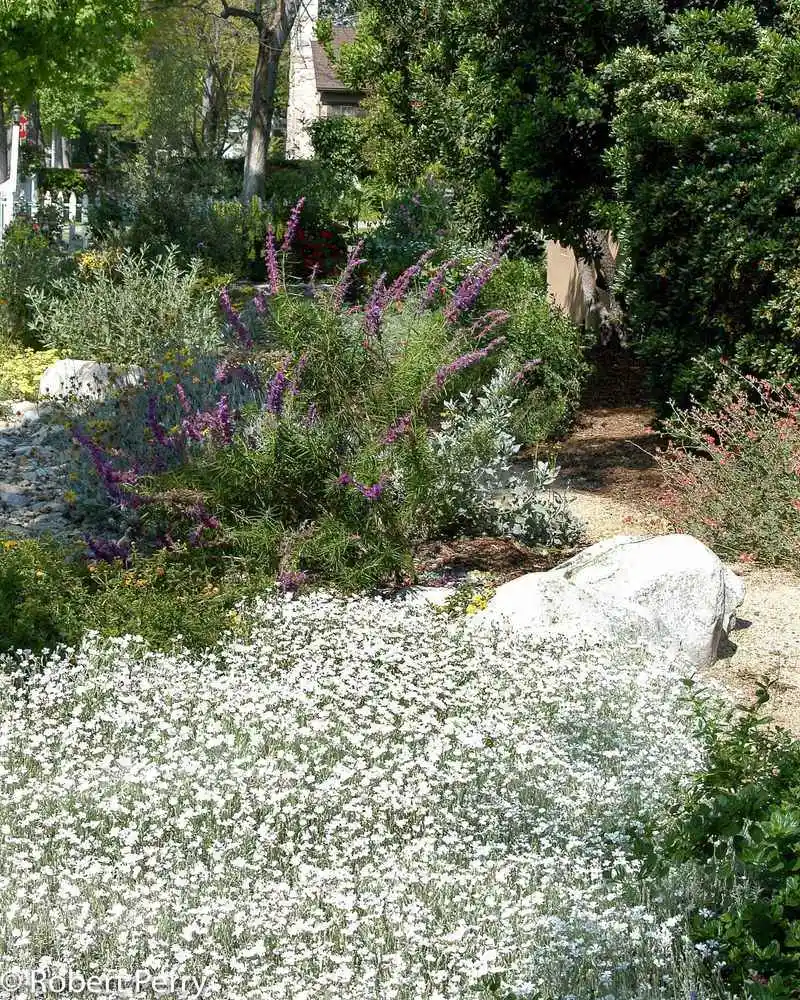
Silver leaves and white flowers define snow-in-summer. It’s an excellent choice for sunny areas, where it forms a dense, eye-catching mat. Its ability to thrive in poor soils makes it valuable for challenging spots. During early summer, it bursts into bloom, offering a dramatic display. While it requires occasional trimming, its aesthetic appeal is undeniable. This plant’s resilience and striking appearance make it a standout choice for adding seasonal interest.
Vinca Minor
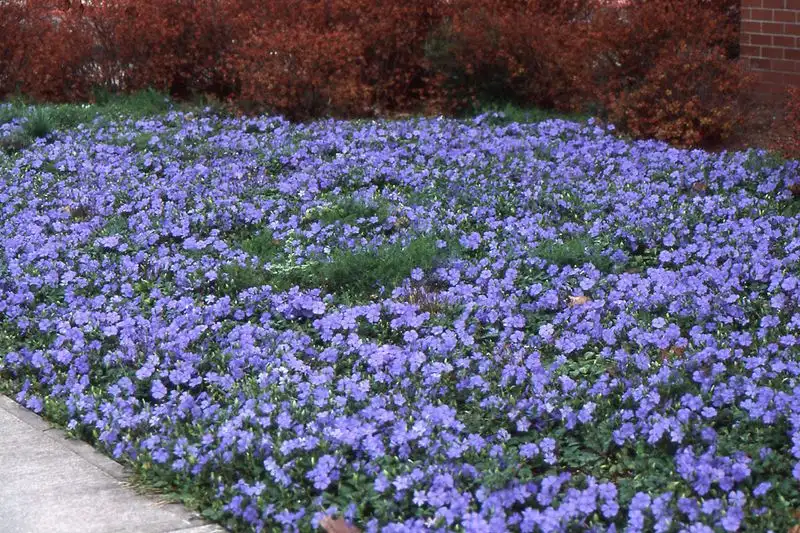
Glossy leaves and blue flowers characterize vinca minor. It’s perfect for shady areas, where it forms a dense, weed-suppressing mat. Its ability to thrive in poor soils enhances its versatility. During spring, it provides a splash of color with its blooms. Low-maintenance, it requires minimal care once established. This plant’s adaptability and aesthetic appeal make it a popular choice for ground cover in challenging garden spots.
Silver Mound

Soft, feathery foliage defines silver mound. It’s an excellent choice for sunny areas, where it forms a dense, attractive mound. Its silvery leaves provide a striking contrast to other plants, adding visual interest. While it prefers well-drained soil, it’s low-maintenance, requiring minimal care. Gardeners often use it to edge borders, where it softens the landscape with its texture. This plant’s resilience and aesthetic appeal make it a favorite for adding year-round interest.
Herniaria
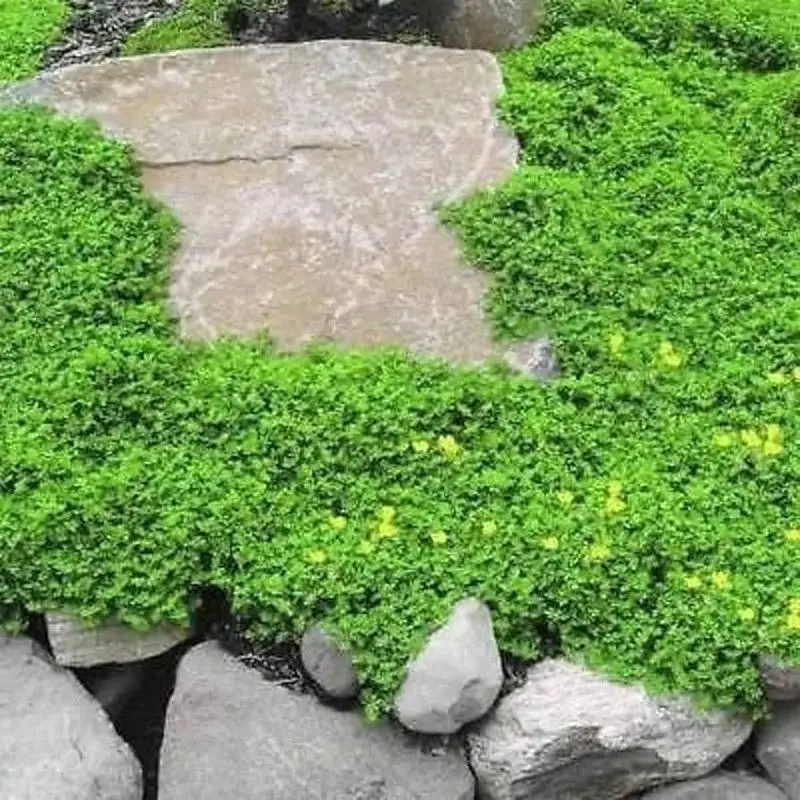
Tiny green leaves and small flowers define herniaria’s charm. It’s a low-growing plant, perfect for rock gardens or as a lawn alternative. Its ability to thrive in poor soils enhances its versatility. Though it requires minimal care, it rewards with a dense, weed-suppressing mat. This plant’s aesthetic appeal and adaptability make it a popular choice for modern gardens. Its resilience in challenging conditions adds to its garden value.
Sedum

Fleshy leaves and star-shaped flowers define sedum. It’s ideal for sunny, dry areas, where it forms a dense, colorful mat. Its drought-tolerant nature makes it perfect for rock gardens or xeriscaping. Although it requires minimal care, it rewards with seasonal blooms that attract pollinators. Gardeners often use it in containers or as a border plant. This plant’s resilience and striking appearance make it a standout choice for adding texture and color.

